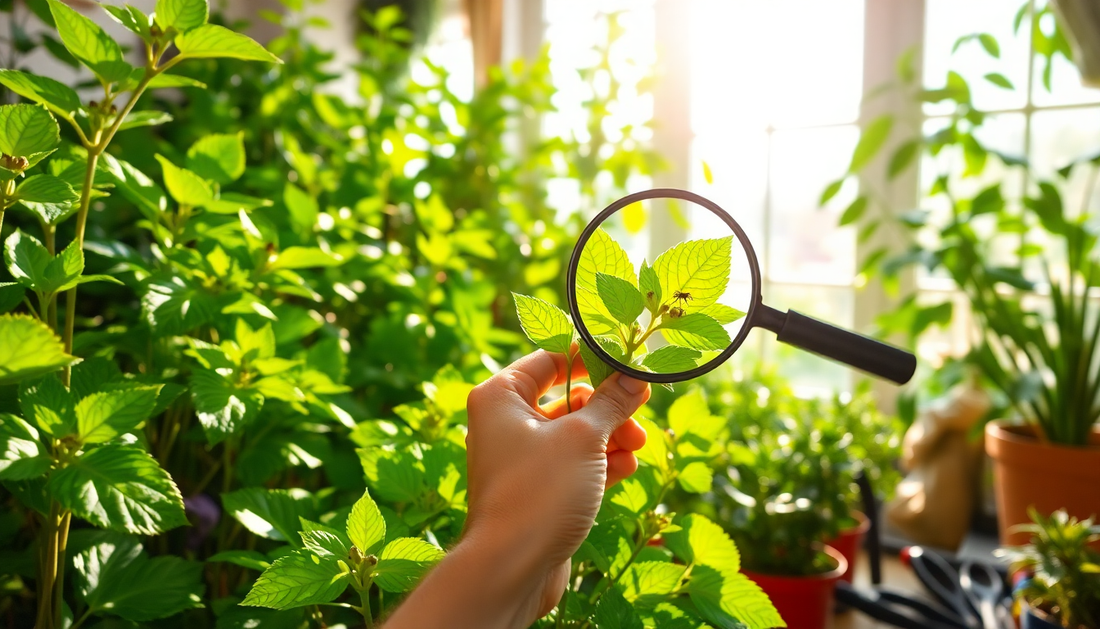
Banish Whiteflies: Your Guide to Protecting Indoor Plants
As a dedicated plant parent, you take pride in nurturing a thriving indoor garden. However, the sudden appearance of whiteflies can quickly dampen your enthusiasm and put your beloved plants at risk. These pesky insects can wreak havoc on your indoor oasis, leaving you feeling frustrated and unsure of how to effectively address the problem.
Fear not, fellow plant enthusiast! In this comprehensive guide, we'll delve into the world of whiteflies, exploring their behavior, the damage they can cause, and most importantly, the strategies you can employ to prevent and eliminate these unwanted guests from your indoor plant collection.
Understanding Whiteflies
Whiteflies are small, winged insects that belong to the Aleyrodidae family. They are often mistaken for tiny moths or aphids, but their distinct white, powdery appearance sets them apart. These insects feed on the sap of plants, drawing out essential nutrients and leaving behind a sticky substance called honeydew.
Whiteflies thrive in warm, humid environments, making indoor plants an ideal target. They can reproduce rapidly, with a single female capable of laying hundreds of eggs during her lifetime. This rapid multiplication can quickly lead to an infestation, causing significant stress and damage to your plants.
Identifying the Signs of Whitefly Infestation
The first step in addressing a whitefly problem is to recognize the signs of their presence. Keep an eye out for the following indicators:
Visible Whiteflies
The most obvious sign of a whitefly infestation is the presence of the insects themselves. Look closely at the undersides of leaves and the stems of your plants, where you may spot the small, white, winged adults fluttering about.
Sticky Leaves
As whiteflies feed on plant sap, they excrete a sticky substance called honeydew. This honeydew can accumulate on the leaves, creating a shiny, sticky surface that may also attract the growth of sooty mold.
Yellowing or Wilting Leaves
Prolonged whitefly feeding can lead to the yellowing, wilting, or even dropping of leaves. This is a result of the plant's diminished ability to absorb nutrients and water due to the insects' constant sap-sucking.
Stunted Growth
In severe cases, a whitefly infestation can stunt the overall growth of your plants, as the insects deprive them of essential resources.
Preventing Whitefly Infestations
The best approach to dealing with whiteflies is to take proactive measures to prevent them from taking hold in the first place. Here are some effective strategies to keep these pests at bay:
Maintain Plant Health
Healthy, vibrant plants are less susceptible to whitefly infestations. Ensure your indoor plants receive the appropriate amount of water, light, and nutrients to keep them thriving. Regular pruning and cleaning can also help remove any hiding spots for whiteflies.
Use Physical Barriers
Install physical barriers, such as fine mesh screens or row covers, around your plants to prevent whiteflies from accessing them. These barriers can be especially effective for plants grown in greenhouses or enclosed spaces.
Introduce Natural Predators
Encourage the presence of natural whitefly predators, such as ladybugs, lacewings, and parasitic wasps, in your indoor garden. These beneficial insects can help control whitefly populations by feeding on the eggs, larvae, and adults.
Practice Good Sanitation
Regularly inspect your plants and remove any infested leaves or stems. Dispose of these materials properly to prevent the spread of whiteflies to other plants. Additionally, keep your growing area clean and free of debris, which can harbor whitefly eggs and larvae.
Treating Whitefly Infestations
Despite your best preventive efforts, you may still encounter a whitefly infestation. In such cases, it's important to act quickly to regain control and protect your plants. Here are some effective treatment methods:
Insecticidal Soaps and Oils
Insecticidal soaps and horticultural oils can be effective in controlling whitefly populations. These products work by disrupting the insects' cell membranes, causing them to dehydrate and die. Be sure to follow the manufacturer's instructions carefully and test on a small area first to ensure your plants don't experience any adverse reactions.
Neem Oil
Neem oil is a natural, plant-based insecticide that can be highly effective against whiteflies. It works by disrupting the insects' life cycle and deterring them from feeding on your plants. Neem oil can be applied as a foliar spray or soil drench.
Biological Controls
Consider introducing beneficial insects, such as ladybugs or lacewings, to your indoor garden. These natural predators can help reduce whitefly populations by feeding on the eggs, larvae, and adults.
Sticky Traps
Placing yellow or blue sticky traps around your plants can help capture and monitor whitefly populations. These traps can provide valuable information about the extent of the infestation and help you track the effectiveness of your control efforts.
Maintaining a Whitefly-Free Indoor Garden
Keeping your indoor plants free from whiteflies requires a multi-pronged approach and ongoing vigilance. By understanding the behavior of these pests, implementing preventive measures, and taking swift action when an infestation occurs, you can protect your beloved plants and enjoy a thriving indoor garden.
Remember, patience and persistence are key when dealing with whiteflies. With the right strategies and a little elbow grease, you can reclaim your indoor oasis and keep your plants healthy and vibrant for years to come.
Additional Resources
For more information on whitefly management and indoor plant care, consider the following resources:
- Whitefly Identification and Management
- Controlling Whiteflies on Houseplants
- Integrated Pest Management for Houseplants
Happy gardening and happy whitefly-free days ahead!







No comments